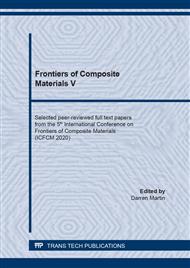p.47
p.57
p.69
p.75
p.81
p.89
p.95
p.101
p.107
The Effect of Biaxial Interlocking Block to the Masonry Wall Properties under Uniaxial Compression Load
Abstract:
Biaxial Interlocking Block (BIB) is a new interlocking block system introduced in this research work. BIB was designed and expected to have the capacity to resist the biaxial load. In this research, the production of BIB was introduced, and the properties of BIB as the individual and walling unit was identified. The features of BIB in terms of density, compressive strength and MOE was identified. To define the impact BIB to the masonry wall capacity, nine walls panel and nine prisms including Solid Block (SB) and cement sand brick (CSB) have been constructed and tested under concentric compressive load. From the data obtained, the BIB walling system was calculated and identified. All the properties values of BIB masonry obtained compared with SB and CSB masonry values. The relationship of masonry properties by different types of masonry unit was also identified and discuss. From all the data and analysis carried out, it is found that the features of masonry unit have influenced the walling properties of the constructed wall. The higher compressive strength of masonry unit will enhance the capacity of the masonry walls. From this research, it is also found that BIB is having excellent properties as a walling unit as compare to SB and CSB wall. A linear relationship between the compressive strength of the samples regardless of the changing in masonry unit compressive strength has been found appropriate with the same slenderness ratio. This work offers valuable data of BIB to the masonry walls properties under compressive load.
Info:
Periodical:
Pages:
107-114
Citation:
Online since:
August 2021
Authors:
Price:
Сopyright:
© 2021 Trans Tech Publications Ltd. All Rights Reserved
Share:
Citation:


